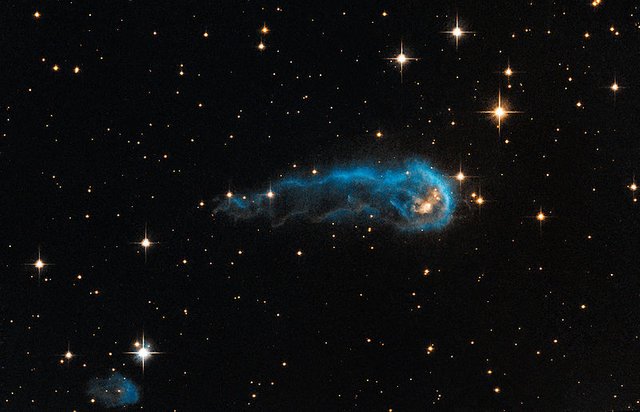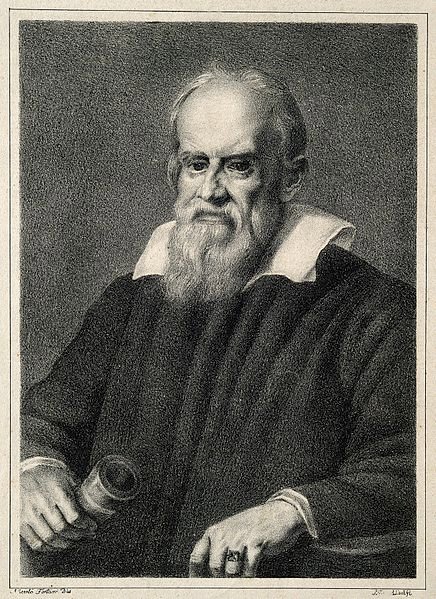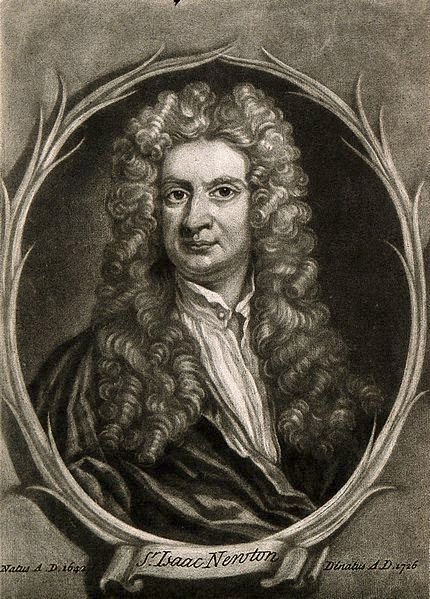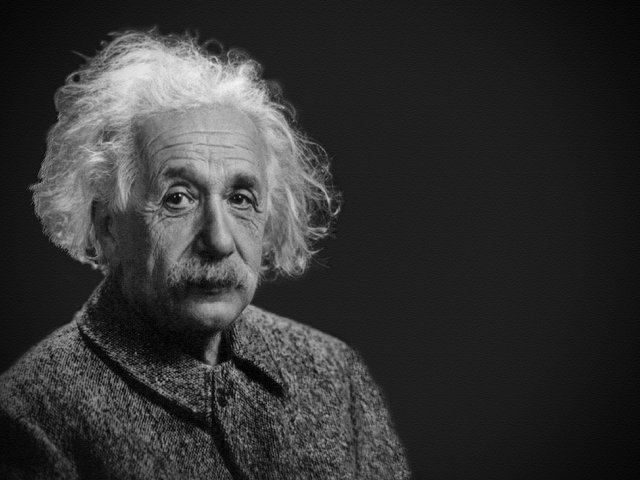The Modern Cosmic Story
After centuries of thought about the universe dominated by the Ptolemy model, the heliocentric system of Copernicus thought produced a revolution of human understanding of the universe. This Copernicus view then sparked a revolution of understanding of the universe initiated by Tycho Brahe with his observations followed by Johannes Kepler and produced Kepler's laws of planetary motion.

A contemporary of Kepler in Italy lived a mathematician and astronomer named Galileo Galilei. As a forward-thinking man of his day, he contributed quite a lot to the progress of the world of astronomy. Using his own homemade telescope he managed to observe the massive satellites of Jupiter (Io, Callisto, Ganymede, and Europa) later called Galilean satellites. The results of his findings are then poured into a book titled Sidereus Nuncius (Duta Bintang). He also made many observations on the planet Venus and found that Venus has phases like the moon.
However, his greatest contribution is in the field of mechanics. To test the view of the movement of objects he experimented with many ways such as a pendulum, dropped objects (according to legend he had done one of his experiments in the oblique tower of Pisa), incline, and so on. According to Aristotle when two different objects of weight are dropped, the heavier objects will reach the ground first. Galileo proves that these two objects will fall on the ground at the same time, the time difference is due to air resistance (astronauts on the surface of the moon have done this experiment, and indeed when two different objects of weight are dropped, both reach the surface of the moon at the same time). Galileo's next contribution was his concept of inertia. Based on his experiments, he concludes that if there is no external impulse, all objects tend to maintain their state, whether it is still or moving at a constant speed. Then Galileo observed that when an object is accelerated, like when dropped or rolled on a sloping plane, the speed increase will be uniform, at the same time interval they will get the same speed increase.
The thought of Kepler and Galileo paved the way for Sir Isaac Newton (1643-1727) to formulate the laws of his gravity. His greatest contribution is his opinion that the motion of falling objects, the moon's orbits around the earth, and the orbits of the planets around the sun follow the same law. This view then changes the human view of the universe, it can be understood using simple laws. The universe is then regarded as a deterministic "clockwork" and follows the law of cause and effect absolutely.
Newton's thought, which was then poured into the great work of Philosophiae Naturalis Principia Mathematica, could be regarded as one of the great revolutions in human understanding of the universe. Even at that moment, there was the thought that the basic laws that controlled the universe were fully understood.
In Newton's view the universe is seen as static, has no central, infinite size, and its like stars are equally distributed throughout the universe. In a letter sent to a friend, Richard Bentley, Newton says there are parts of the more compressed and less-compressed universe, the more compressed parts will attract the less compressed parts of its gravity and this will produce planets like planets -planets and stars.
Newton's thinking established the view that the universe is a clockwork system in which God is the Original Mover. This Newtonian view dominated the European scientific world at that time for more than two hundred years, until when Albert Einstein formulated the theory of special and general relativity.
When Einstein formulated the general theory of relativity, and then applied to the universe, he found that his theory foretold the development of the universe. Because he follows Newton's view and believes that the universe is static, he then incorporates a constant into the general relativity equation to neutralize the effects of this development and this constant is then called the cosmological constant. If only he did not include this constant, he would give the greatest discovery in the history of science, namely the development of the universe. After he got the proof that the universe had undergone development as demonstrated by Edwin Hubble's observations of the United States he later regretted his actions as what he called the greatest blunders of his career.
Based on this theory of general relativity, some cosmologists then try to model the universe, as proposed by Alexander Friedmann, Willem de Sitter, and Georges-Henri Lemaitre, a priest from Belgium. Lemaitrê was the first to propose that the universe came from something he called an ancient atom whose size thirty times the size of the Sun. This ancient atom exploded and split into galaxies and stars expanding in all directions.
Lemaitre's universe model is continuously refined by several researchers such as Robertson and Walker which show that the universe is curved and every point in the universe moves together following the development of the universe.
However, in addition to the model developed by Lemaitrê and friends, there is another universe model developed by Fred Hoyle, Hermann Bondi, and Thomas Gold called the steady-state model. Here they argue that the universe is always the same in space and time and there is no such thing as the explosive process that produced the present universe, and they even make fun of this explosion process by the name of Big Bang (Big Bang).
Based on Hubble's observation of the development of the universe, they hold that the universe is expanding, but the state is always fixed because every moment at every point in the universe occurs the process of creating matter that is the basic material of the universe, the hydrogen atoms out of nothing. These atoms will in turn become the stars and galaxies of the inhabitants of the entire universe. So if the Big Bang theory states that the creation of the universe takes place only once, then the steady-state theory holds that the process of creation takes place every time and everywhere, and this universe is always the same and continues throughout its time.
Steady-state theory is quite interesting because it can break away from the problem of the creation process itself, including the possibility of a Creator that allows the emergence of this universe. Indeed, until now in the stronghold of the theory of the Big Bang, there is still a pretty heated debate about the existence or absence of the Creator who made the process of creation.
One disadvantage of this steady-state theory is the process of creating material that goes on continuously from nothing against the law of conservation of the masses. However, the proponents of the steady-state theory say that the creation of the universe through a process of explosions in the distant past is no more plausible than the creation of the hydrogen atoms of the stars from their absence.
Another weakness is the absence of this steady-state theory from observation. As astronomers observe the distant distance (which means moving further into the past), they see more quasars (quasi-stellar radio sources) than at closer distances. They also see more of the process of star creation in the past than in the present. This means that these two phenomena are more common in the past than in the present, and this is in contrast to the steady-state theory because if the universe is always the same, then this quasar will also be at a great distance. Another objection is that this steady-state theory can not explain why the universe is developing; the development of the universe has been considered "taken for granted" in this theory. Furthermore, the deadly blow to this steady-state theory is the discovery of background cosmic radiation interpreted as the radiation of the remainder of the process that gave birth to our universe. Finally, the steady state theory is now only a part of the history of modern cosmology, and the Big Bang model is the single most accepted model of the universe to date.
In addition to observing the process of developing the universe, the model of the Big Bang universe is supported by two other things, namely observing the background cosmic radiation interpreted as radiation from the remnants of a blast process that went far in the past (discovered by Arno Penzias and Robert Wilson in 1965 and for this discovery they received the Nobel Prize in 1978), and the corresponding observations with the theoretical results on the abundance of hydrogen, helium and lithium elements resulted in the formation of the basic elements immediately after the Big Bang took place.
The Babylonian cosmic story only applies to the Babylonians, the Maya cosmic story only to the Aztecs, and so on. However, with the acceptance of the Big Bang model as the only valid universe model, it is for the first time that mankind has a universal cosmic story, overcoming various nations and languages. In addition, this cosmic story also uses a universal language as well, namely the language of physics and mathematics.
In this modern age, we live in a time in which the universe becomes an object very far from us, both physically and existentially, so we never feel part of the universe itself. The implications of this are the terrible things we see every day.
We are now faced with a divided world. We see many wars with religious motives, resources, politics, power, money, and so on. We observe the surroundings we destroy without thinking about the impact on our children and grandchildren. All this is done as if we are the ruler of nature and the environment around us so that they all become objects that can be mastered and treated at will.
This begins as people begin to see the universe in a rational way, and they begin to distance themselves from the universe. The peak of human joy occurs in modern times when humans see the universe as an object that can be dissected using their rationality knife through physical and mathematical analysis. This joy makes humans do not feel a part of the universe. However, precisely at the peak of this joy rationality leads them to a single cosmic story in the Big Bang model.
Best Regard @h4f
Reference :
https://www.universetoday.com/33113/heliocentric-model/
https://graduateway.com/copernicus-newton-and-the-scientific-revolution/
https://www.encyclopedia.com/science/science-magazines/astronomy-and-cosmology-geocentric-and-heliocentric-models-universe
http://www.newworldencyclopedia.org/entry/Big_Bang
Gribbin, J. (1986), In Search of the Big Bang: Quantum Physics and Cosmology, Bantam Books
Griffin, D.R. (ed.) (1988), The Reenchanment of Science: Postmodern Proposals, State University of New York Press
Silk, J. (1988), The Big Bang, W.H. Freeman & Co.


